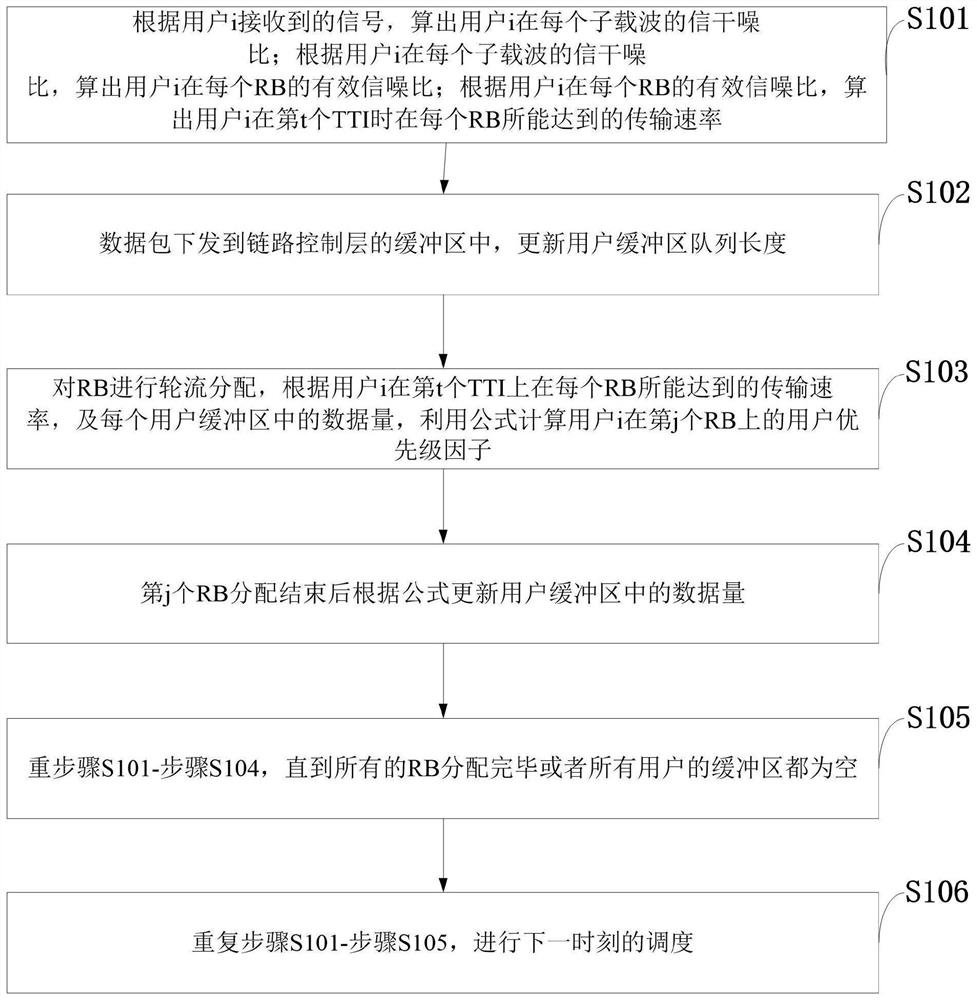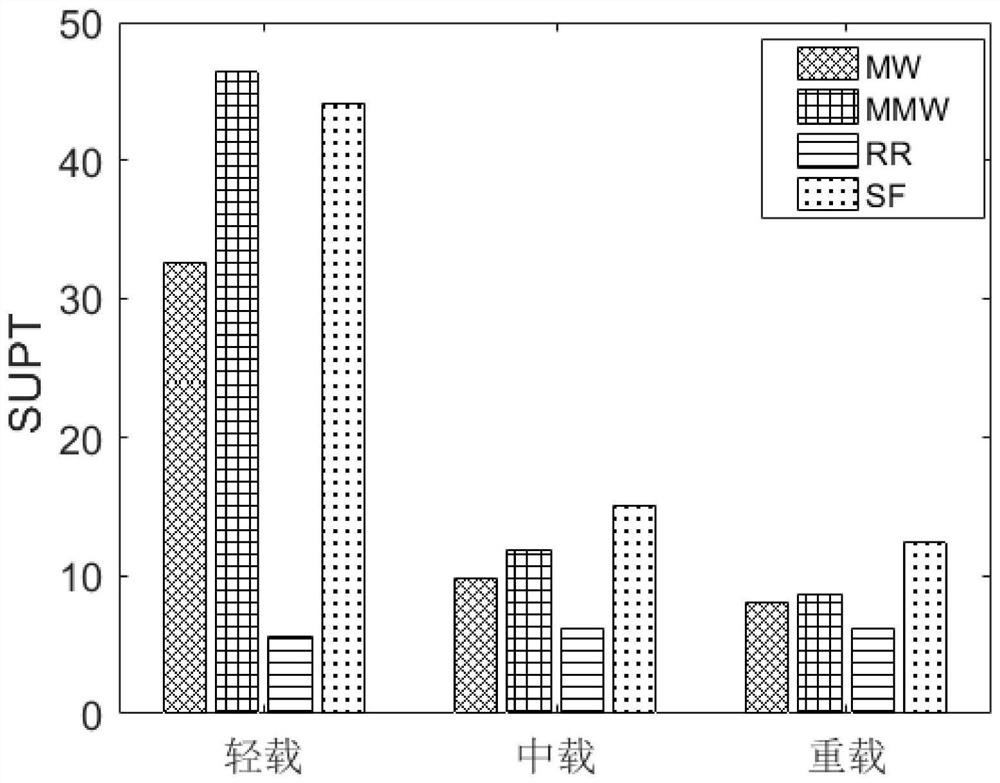An Allocation Method of MAC Layer Resource Blocks in LTE System with Improved Weight
An allocation method and resource block technology, which are applied in the field of resource block allocation at the media access control layer of the LTE system, can solve the problems of not taking into account the length of the user queue, the perceived rate of system users is inferior, and the waste of limited resources and bandwidth resources. System users perceive the effect of rate increase, throughput not degraded, and low system latency
- Summary
- Abstract
- Description
- Claims
- Application Information
AI Technical Summary
Problems solved by technology
Method used
Image
Examples
Embodiment Construction
[0037] In order to make the objectives, technical solutions and advantages of the present invention clearer, the present invention will be further described in detail below with reference to the embodiments. It should be understood that the specific embodiments described herein are only used to explain the present invention, but not to limit the present invention.
[0038] According to the prior art, a centralized scheduling is proposed to improve the user perception rate by using the coordinated multi-point technology, but additional signaling overhead needs to be introduced due to information exchange; the MW scheduling method cannot make the system user perception rate reach the best. On the premise of ensuring the stability of the system, the present invention improves the user perception rate of the system.
[0039] The technical solutions of the present invention will be described in detail below with reference to the accompanying drawings.
[0040] like figure 1 As sh...
PUM
 Login to View More
Login to View More Abstract
Description
Claims
Application Information
 Login to View More
Login to View More - R&D
- Intellectual Property
- Life Sciences
- Materials
- Tech Scout
- Unparalleled Data Quality
- Higher Quality Content
- 60% Fewer Hallucinations
Browse by: Latest US Patents, China's latest patents, Technical Efficacy Thesaurus, Application Domain, Technology Topic, Popular Technical Reports.
© 2025 PatSnap. All rights reserved.Legal|Privacy policy|Modern Slavery Act Transparency Statement|Sitemap|About US| Contact US: help@patsnap.com



